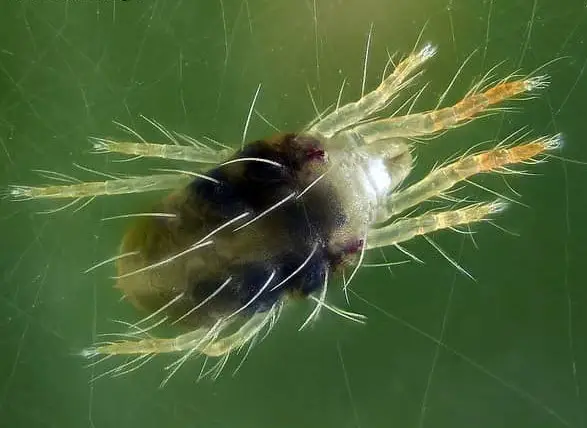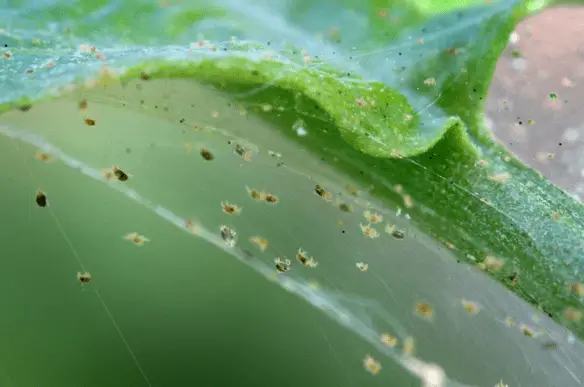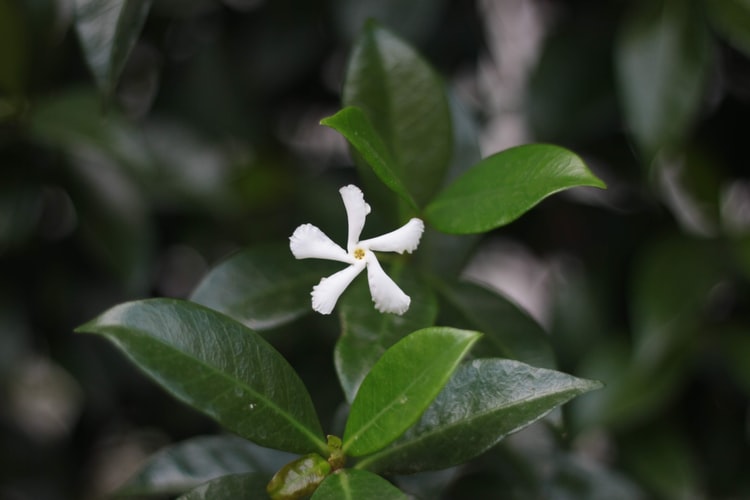Jasmines are truly beautiful plants. They are commonly known to have gorgeous white or yellow flowers. Not to mention they have the best-smelling natural fragrances of all time.
It is a great plant to have either in the garden or indoors. Besides its beauty, it has many different beneficial uses. Taking care of the jasmine plant is easy to a certain extent. It does not require much attention and care. However, Any jasmine owner needs to know what damages the jasmine plant.
Have you ever noticed your jasmine plant’s leaves turning an unusual shade of red and wondered why? As a lifelong experienced gardener, I can tell you that Jasmine leaves change of color can be caused by many different factors. The foliage can turn either red, yellow, pale yellow, purple, lighter green or brown. Each color tells us a different thing.
The Cause Why Jasmine Leaves Are Turning Red
The Scientific Explanation of the Leaves Turning Red
Generally, when leaves turn red, a chemical called anthocyanins is produced. This phenomenon occurs from the sugar-built-in plants reacting with proteins in the cell sap. This natural reaction creates the pigment that turns green leaves into red leaves. In some cases, the pigment from chlorophyll reflects different shades of red and purple.
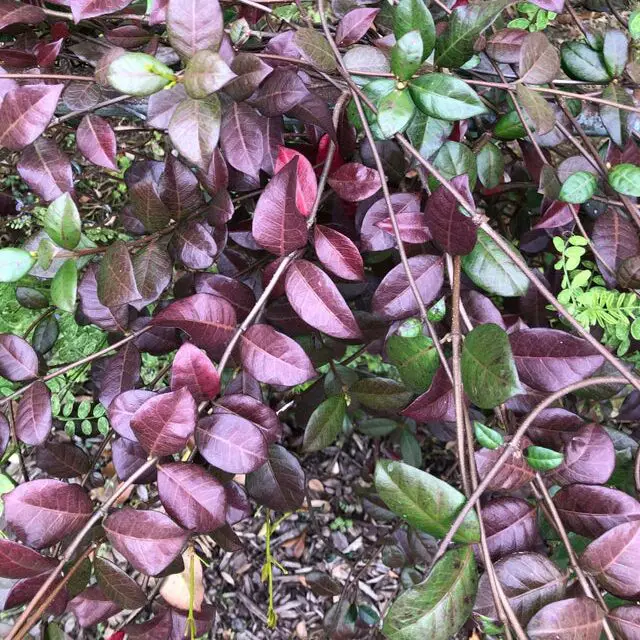
There can be many causes of why your jasmine leaves are turning red. Red foliage can be a problem if your jasmine is an evergreen plant. Because there are some types of jasmine their foliage turns red naturally during spring and fall.
Causes and Solutions for Red Leaves in Jasmine Plants
| Cause | Solution |
|---|---|
| Nutrient Deficiency | Apply a balanced fertilizer, rich in iron and magnesium. |
| Pest Infestation | Use neem oil or insecticidal soap to treat pests. |
| Water Stress (Over/Under) | Adjust watering schedule; ensure soil is well-draining. |
| Sunlight Exposure | Provide 4-6 hours of indirect sunlight daily. |
| Temperature Fluctuations | Protect from extreme cold or heat; maintain a stable environment. |
| Soil pH Imbalance | No action is needed; monitor your plant for other stress signs. |
| Fungal Diseases | Treat with appropriate fungicides and improve air circulation. |
| Natural Seasonal Change | No action is needed; monitor your plant for other stress signs. |
More details on the Causes and Solutions for Red Leaves in Jasmine Plants
1. Natural Causes
In most cases, red leaves are normal. They can indicate the beginning of a new season. That only if there was still a noticeable growth of new leaves and the old red leaves should fall after a while. If otherwise, your plant needs help.
Change of the season is the number one reason why leaves turn red. Generally, the change of seasons is not something to worry about because it is all natural and it happens very often. After a while, the color will go back to green. Give your red leaves some time before judging the issue. If your plant remains red and there is no growth, that’s when you need to worry.
2. Water
Jasmine does not require a lot of water. However, it does not like dry soil as well. It needs rich soil with a good draining system. Water stress can create many problems and among them is red leaves. Water stress will disturb the phosphorus and the sugar which will lead to creating red pigmentation.
Solution
Water stress is a very common cause. Too much water can kill any plant out there. In the case of jasmine plants, the leaves might turn red and eventually die. To check if you’re overwatering your plant, you can notice that the top of the soil turns greenish (due to algae) and the soil will also look too compressed.
As a solution, you can turn the soil over using a shovel. You can also try to provide a drainage system so that the access water can be ditched.
Underwatering problems can be simply solved by watering your plant three times a week during spring and fall. Once a week during winter and every two days during summer. However, if your region is too hot during summer, water your plant every day.
3. Nutrient Deficiency
Nutrient deficiency is often responsible for the color change of any plant’s foliage. Premature senescence in the early season is related to a lack of nutrients. Thus, it will turn your jasmine leaves red.
An absence of one of the following minerals could be the reason why the leaves are turning red: nitrogen (N), phosphorus (P), magnesium (Mg), or potassium (K).
You can tell when your plant lacks phosphorus when the lower short leaves turn red. This happens because the sugar built up in the cell sap increases and causes red pigmentation. The redness can appear either covering the whole leaf or as spots.
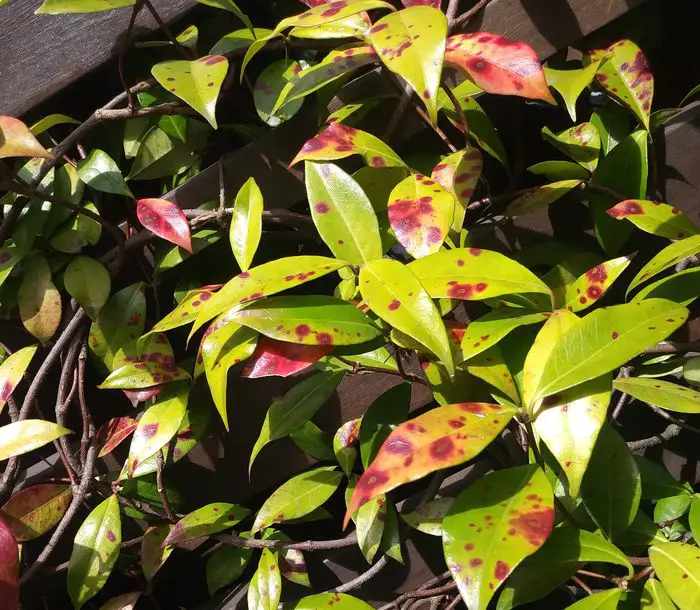
4. Plant Stress
The cause of red leaves in jasmine can be because it is under stress. That means your plant is lacking feed, overwatered, underwatered, or its environment is too cold.
Lack of Nutrients
Make sure you provide the necessary minerals. Jasmine plants love to grow in rich soil, you can feed it seaweed and other solutions provided in the nursery. Rich soil makes all plants happy and healthy.
Cold Weather
If you live in an area where the winter is too cold, transfer your plant into a pot and put it indoors. Frost can directly kill your plant within a couple of days. So you need to be careful during winter and watch over your plants.
5. Pruning
Jasmine leaves typically do not turn red solely due to pruning done incorrectly. The color change in jasmine leaves is primarily influenced by factors like seasonal changes, temperature fluctuations, and the plant’s natural growth cycle.
Pruning, when done improperly, can stress the plant and potentially lead to leaf discoloration or damage, but it is not the primary cause of leaves turning red.
Improper pruning can affect the overall health of the jasmine plant, making it more susceptible to stress factors and potentially compromising its ability to adapt to changing environmental conditions.
To maintain the health and appearance of your jasmine plant, it’s essential to follow proper pruning techniques and consider other factors such as sunlight, temperature, and soil conditions that may contribute to leaf color changes.
6. Pests and Diseases
Pests and diseases can indeed cause jasmine leaves to turn red. When jasmine plants are infested with pests or affected by diseases, it can lead to various symptoms, including discoloration of the leaves. Here are a few common examples:
- Spider Mites: Spider mites are tiny pests that suck the sap from plant leaves. Their feeding can cause stippling or speckling on the leaves, which may eventually turn the affected areas reddish or brownish.
- Fungal Infections: Fungal diseases like rust or powdery mildew can affect jasmine leaves. These infections often manifest as white or rusty-colored patches on the leaves, which can sometimes turn reddish as the disease progresses.
- Bacterial Infections: Bacterial diseases can also lead to leaf discoloration. These infections may cause spots or lesions on the leaves, which can sometimes appear reddish or brownish.
To prevent and address these issues, it’s essential to maintain proper care for your jasmine plant, including regular inspection for pests and diseases, providing appropriate watering, and ensuring proper nutrition. Early detection and appropriate treatment are key to keeping your jasmine leaves healthy and their color vibrant.
7. Sun Exposure
sun exposure can indeed cause jasmine leaves to turn red. While jasmine plants generally thrive in full sun to partial shade, excessive sun exposure, especially during hot and dry periods, can stress the plant and lead to various issues, including leaf discoloration.
Here’s how sun exposure can cause jasmine leaves to turn red:
- Sunburn: Just like us, humans, plants can also get sunburned. Prolonged exposure to intense sunlight, especially in the absence of adequate moisture, can cause the leaves to develop red or brown patches. These areas of the leaf are essentially “burned” by the sun’s UV rays.
- Heat Stress: Excessive heat, particularly in combination with high temperatures, can stress the jasmine plant. This stress can lead to changes in leaf color, and the leaves may turn red or yellow as a response to the environmental stress.
- Drought Stress: If the jasmine plant doesn’t receive enough water during periods of intense sun exposure, it can become drought-stressed. Drought stress can result in leaf wilting and discoloration, often appearing as red or brown edges or tips on the leaves.
To prevent sun-induced leaf discoloration, it’s important to ensure that your jasmine plant receives the appropriate amount of sunlight for its specific variety and is adequately watered, especially during hot and dry weather. Providing some shade during the hottest part of the day or heatwaves can also help protect the plant from excessive sun exposure. Proper care and attention to its environmental needs will help keep your jasmine leaves healthy and their color vibrant.
8. Plant Age and Life Cycle
Understanding Natural Aging: As jasmine leaves age, they may turn red before falling off. This is a normal part of the plant’s lifecycle and typically doesn’t require intervention unless it’s widespread across the plant.
IMPORTANT NOTE
To feed your plant with any minerals, you need to get your soil tested first. Some nutrients such as phosphorus can be dangerous if added while it is already in the soil. Too much phosphorus can kill a plant and damage the environment.
Expert Gardener Tips
- Consistent Care: Establish a routine for watering, pruning, and inspecting your plants.
- Soil Health: Use organic compost to enrich soil structure and nutrient content.
- Sunlight Balance: Ensure your jasmine receives 4-6 hours of indirect sunlight daily.
- Disease Prevention: Keep foliage dry and ensure good air circulation to prevent fungal diseases.
Prevent Jasmine Leaves From Turning Red
Keeping your jasmine plant thriving and its leaves vibrant and green requires a proactive approach to care. Here are essential tips to prevent your jasmine’s leaves from turning red and ensure your plant remains healthy and beautiful:
1. Optimal Watering Practices
- Consistency is Key: Jasmine plants prefer a balance when it comes to moisture. Water your plants deeply but allow the soil to dry slightly between watering sessions. Over-watering and under-watering can stress the plant, leading to red leaves.
- Monitor Soil Moisture: Use a soil moisture meter or your finger to check the soil’s moisture level. The top inch should be dry before you water again.
2. Proper Fertilization
- Balanced Nutrition: Feed your jasmine with a balanced, slow-release fertilizer that contains all the necessary nutrients, including iron and magnesium, which are critical to preventing leaf discoloration.
- Follow Schedule: Fertilize your jasmine plant every two to three months during the growing season, but reduce the frequency in the winter months when the plant’s growth slows down.
3. Adequate Sunlight and Shade
- Ideal Exposure: Jasmine plants thrive in bright, indirect sunlight. While they need a good amount of light, too much direct sunlight can cause stress and leaf burn, leading to discoloration.
- Adjust Placement: If your jasmine is in a pot, move it to a location where it receives the optimal balance of light and shade throughout the day.
4. Temperature and Climate Control
- Avoid Extremes: Jasmine plants are sensitive to extreme temperatures. Protect them from harsh sun in summer and frost in winter by placing them in environments with stable, moderate temperatures.
- Indoor Care: If you keep your jasmine indoors, avoid placing it near vents, heaters, or drafts that could cause sudden temperature changes.
5. Regular Pest Inspections
- Prevent Infestations: Check your jasmine regularly for signs of pests like spider mites or aphids. Early detection is key to preventing damage.
- Natural Remedies: Use neem oil or insecticidal soap as a preventive measure to keep pests at bay without harming the plant or the environment.
6. Proper Pruning
- Encourage Growth: Regular pruning helps maintain the shape of your jasmine and encourages healthy growth. Remove any dead or damaged branches to prevent disease and stress on the plant.
- Pruning Time: The best time to prune jasmine is right after it blooms to avoid cutting off next year’s flowers.
7. Soil Quality and Drainage
- Well-Draining Soil: Ensure your jasmine is planted in well-draining soil to prevent waterlogged roots, which can lead to root rot and leaf discoloration.
- pH Balance: Jasmines prefer slightly acidic to neutral soil. Test your soil’s pH and adjust if necessary to fall within a pH range of 6.0 to 7.5.
Jasmine Plant Care: Year-Round Maintenance Guide
Jasmine plants thrive with consistent, attentive care. Here’s how to keep them flourishing:
- Sunlight: Jasmine plants prefer about 4-6 hours of indirect sunlight daily. They enjoy bright but filtered light.
- Soil: Well-draining soil rich in organic matter suits jasmine plants best. Ensure good soil aeration to prevent root diseases.
- Temperature and Humidity: These plants prefer a warm, moderately humid environment. Protect them from extreme temperature fluctuations.
- Fertilization: Feed your jasmine with a balanced fertilizer during the growing season. Reduce feeding in the dormant winter months.
Pruning Jasmine: Timing and Techniques
When to Prune: The best time to prune jasmine is after it blooms. This allows the plant to set new buds for the next flowering season.
How to Prune:
- Remove dead or damaged branches to maintain plant health.
- Cut back long, overgrown stems to shape the plant and encourage bushier growth.
- Make clean cuts with sharp pruning shears.
Watering Jasmine: Schedule and Best Practices
Jasmine plants require regular, balanced watering. Here’s a guide:
| Season | Watering Frequency | Notes |
|---|---|---|
| Spring/Summer | 1-2 times per week | Increase frequency during hot, dry spells. |
| Autumn | Once a week | Adjust based on rainfall and temperature. |
| Winter | Every 2 weeks or as needed | Soil should be kept slightly moist. |
- Method: Water deeply to encourage root growth. Avoid wetting the leaves to prevent fungal diseases.
- Monitoring: Check the top inch of soil; water when it feels dry.
Frequently Asked Questions
Q: Can red leaves on my jasmine turn green again?
A: It depends on the cause. Correcting the issue can lead to new green growth if it’s due to environmental stress or nutrient deficiency.
Q: How can I tell if my jasmine is overwatered?
A: Signs of overwatering include yellowing leaves, soggy soil, and a general wilting appearance.
Q: Is it normal for jasmine leaves to turn red in autumn?
A: Yes, some jasmine varieties naturally display red leaves in autumn as a response to cooler temperatures and reduced light.
Q: Can jasmine plants recover from pest infestations?
A: Absolutely. With proper treatment, such as neem oil or insecticidal soap, jasmine plants can recover from pest infestations.
Q: How often should I fertilize my jasmine plant?
A: Generally, fertilize your jasmine plant every two to three months during the growing season with a balanced fertilizer.
Conclusion
Any deficiency will lead the plant to stress. Once the plant is stressed, various issues appear. Make sure to give your jasmine plant some attention. They are very nice and low-maintenance plants. All they need is a little attention from time to time.

